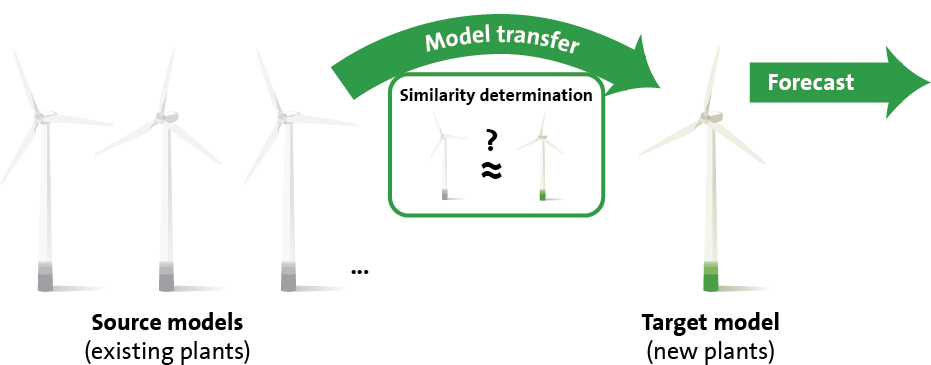Simulating the forecast uncertainty of future renewable energy plants
To ensure a secure and affordable power supply, future electricity production must be predicted as accurately as possible. However, the rapid changes in the energy sector with the increasing expansion of renewable energies and the resulting ever more variable electricity production make this increasingly difficult.
Supported by the German Federal Ministry for Economic Affairs and Energy with a budget of over one million euros, the enercast development team, together with the Fraunhofer Institute for Energy Economics and Energy System Technology (IEE) and the University of Kassel, therefore conducted research on “Forecasting uncertainties for wind energy and photovoltaics in future power supply systems” in the joint project “Prophesy”. The project was successfully completed at the end of 2020.
Tool simulates the development of future forecast errors
The forecast uncertainties of wind and solar energy in the power supply systems played a major role. Therefore, the project developed a simulation tool that calculates the expected feed-in, forecast as well as forecast error values for electricity from photovoltaic and wind power plants for different scenarios. For the first time, the researchers also took into account the development of errors for periods in the future, imitated and finally analyzed them.

Based on actual measured feed-in, computed forecasts and the forecast error as the difference between forecast and feed-in, a tool was developed that simulates the same quantities in order to analyze the forecast uncertainty for future scenarios.
Identification of influencing factors enables efficient simulation
An extensive analysis of physical and machine learning methods for power forecasting identified significant influencing factors for the simulation of the forecast error. These include wind speed and terrain type for wind turbines and the tilt angle and possible shading for PV systems. In addition to that, the general data availability and the weather models being used are important factors to be taken into account. It has also been shown that the error is related to the course of the day and of the year.
Reference for future planning studies
The findings enable efficient simulation of forecast error time series for different locations, regions and time periods, which can subsequently be used, for example, for planning future power grids, integrating electromobility or optimizing the use of existing plants.
The results of the analysis on the accuracy of the different methods for plant simulation form a basis for the development of products for the economic assessment of plants that are new or not known in detail, as well as for the analysis of energy systems. During the project, a comprehensive database of prediction methods was built up, which now serves as a reference for future planning studies.
In our new research project “TRANSFER” we study Transfer Learning as an essential tool for the energy transition, aiming at increasing the forecast accuracy for new sites. Read the article here.


 Back to overview
Back to overview 

